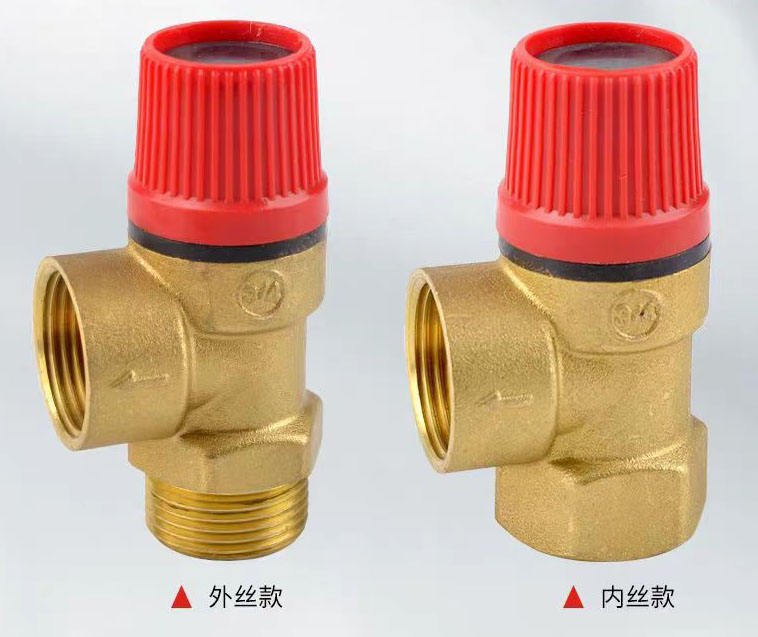Imagine your hydraulic system failing because of excessive pressure—equipment breaks, downtime skyrockets, and repair costs pile up fast. Ignoring pressure control can lead to catastrophic failures in your operations. The solution? A pressure relief valve. This critical component protects your system, and in this article, we’ll dive deep into its purpose, types, and workings to help you choose the right one.
The main purpose of a pressure relief valve is to protect hydraulic systems by releasing excess pressure. When pressure exceeds safe limits, the valve opens, diverting fluid to prevent equipment damage. This ensures system safety, longevity, and efficiency, making it essential for industries like plumbing and manufacturing.
Curious about how these valves work or which type suits your needs? Keep reading to explore their types, principles, and functions in hydraulic systems.

What Are the Three Types of Pressure Relief Valves?
Pressure relief valves come in various forms, each designed for specific applications. Understanding the hydraulic pressure relief valve types helps you pick the right one for your system. The three main types are direct-acting, pilot-operated, and balanced bellows relief valves. Each has unique features, making them suitable for different pressure control needs.
Direct-acting pressure relief valves are simple and reliable. They use a spring-loaded mechanism to open when system pressure exceeds the set limit. These valves are ideal for smaller systems with moderate pressure levels, offering quick response times. However, they may struggle in high-pressure or high-flow scenarios due to their limited capacity.
Pilot-operated relief valves are more complex, using a smaller pilot valve to control a larger main valve. This design excels in high-pressure systems, providing precise control and stability. They’re commonly used in industrial applications like construction or manufacturing, where consistent performance is critical. Their hydraulic pressure relief valve adjustment allows fine-tuning for specific pressure settings.
Balanced bellows relief valves are designed for systems with backpressure or corrosive fluids. The bellows isolate the valve’s internal components, ensuring accurate pressure control even in challenging conditions. These valves are perfect for chemical plants or harsh environments. By understanding these hydraulic pressure relief valve types, you can ensure your system’s safety and efficiency. Want to know how these valves operate? Let’s explore their principles next.
What is the Principle of Hydraulic Pressure Control Valve?
The working principle of a hydraulic pressure control valve, including pressure relief valves, is all about maintaining safe pressure levels in a system. These valves act like a safety guard, ensuring fluid pressure doesn’t exceed what your equipment can handle. But how do they achieve this? Let’s break it down.
At its core, a pressure relief valve relies on a balance between system pressure and a pre-set force, usually a spring or pilot mechanism. When the hydraulic system’s pressure rises, it pushes against the valve’s internal components. If the pressure exceeds the valve’s set point, the valve opens, allowing excess fluid to escape, often to a reservoir or low-pressure line. This process prevents damage to pipes, pumps, or other components.
The hydraulic pressure relief valve symbol in a pressure relief valve circuit diagram typically shows a valve with an arrow indicating flow direction and a spring symbol for the set pressure. Adjustments to the spring tension or pilot settings allow you to control the valve’s opening point, known as hydraulic pressure relief valve adjustment. This flexibility makes pressure relief valves vital for maintaining system stability. By regulating pressure, they protect your equipment and ensure smooth operations, especially in demanding applications like plumbing or industrial systems.
How Does a Pressure Relief Valve Work in Hydraulics?
Understanding how a pressure relief valve works in hydraulics is key to appreciating its role in your system. These valves are like the gatekeepers of pressure, ensuring your hydraulic setup runs safely and efficiently. Let’s dive into the mechanics behind their operation, including their role in the main relief valve in hydraulic system.
In a hydraulic system, fluid is pressurized to power equipment like pumps, motors, or actuators. However, if pressure builds up too much—say, due to a blockage or system malfunction—it can damage components. That’s where the pressure relief valve steps in. The valve is installed in the hydraulic circuit, often near the pump, as shown in a hydraulic pressure relief valve diagram. It constantly monitors system pressure.
When pressure exceeds the valve’s set limit, the valve’s internal mechanism—either a spring or pilot—reacts. The valve opens, redirecting excess fluid to a low-pressure area, like a reservoir. This process, part of the function of pressure reducing valve in hydraulic system, prevents overpressure and protects your equipment. Once the pressure drops to a safe level, the valve closes, allowing normal operation to resume.
The hydraulic pressure relief valve symbol in circuit diagrams often includes a dashed line to show the relief path. Adjustments to the valve’s settings, or hydraulic pressure relief valve adjustment, let you customize the pressure threshold. Whether in construction, plumbing, or manufacturing, these valves are critical for safety and efficiency. By controlling pressure spikes, they extend the life of your system and reduce costly repairs.
Summary: Why Pressure Relief Valves Matter
Pressure relief valves are the unsung heroes of hydraulic systems, protecting equipment from dangerous pressure spikes. From direct-acting to pilot-operated and balanced bellows types, each serves a unique purpose in maintaining system safety. Their working principle relies on balancing pressure with a spring or pilot mechanism, as shown in hydraulic pressure relief valve diagrams. By opening to release excess fluid, they prevent damage and ensure smooth operations. Whether you’re in plumbing, construction, or manufacturing, choosing the right valve is crucial for efficiency and longevity. At IVALVECRAFT, we offer high-quality hydraulic pressure relief valves designed for stable performance and sufficient flow rates. Reach out to us for reliable solutions tailored to your needs.
Choose IVALVECRAFT, choose reliable partner, enjoy the high quality and best service.


